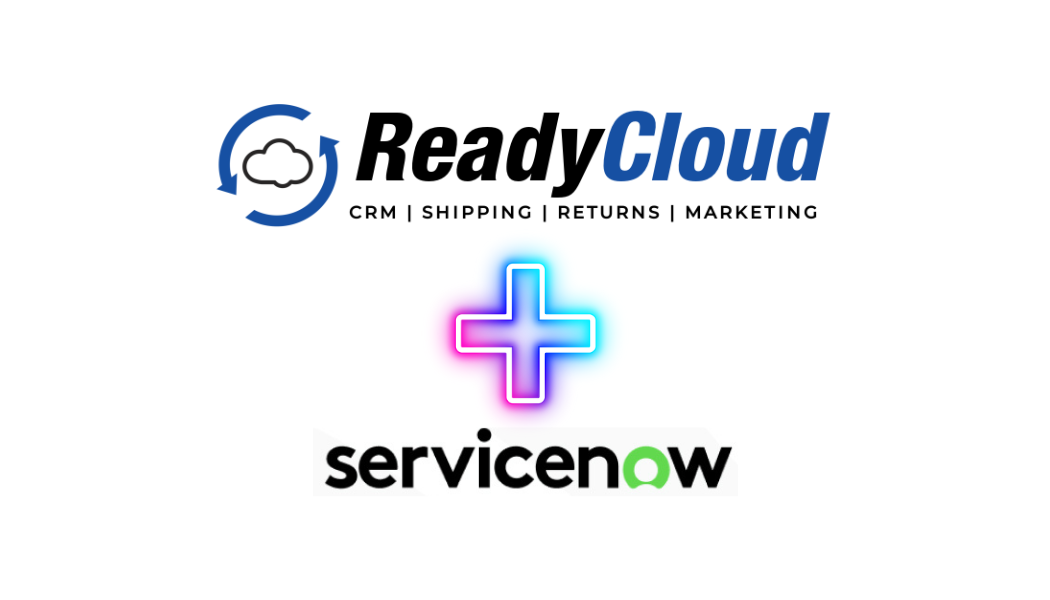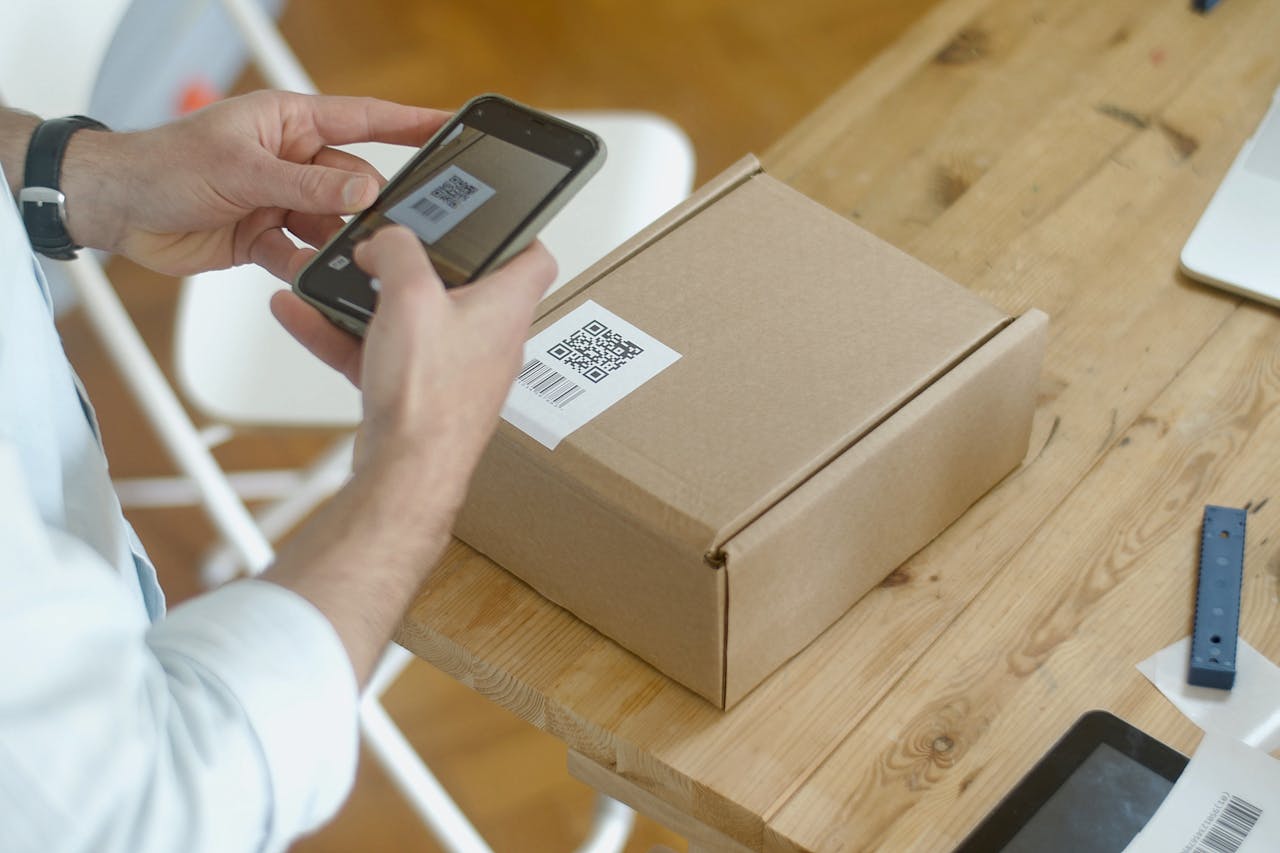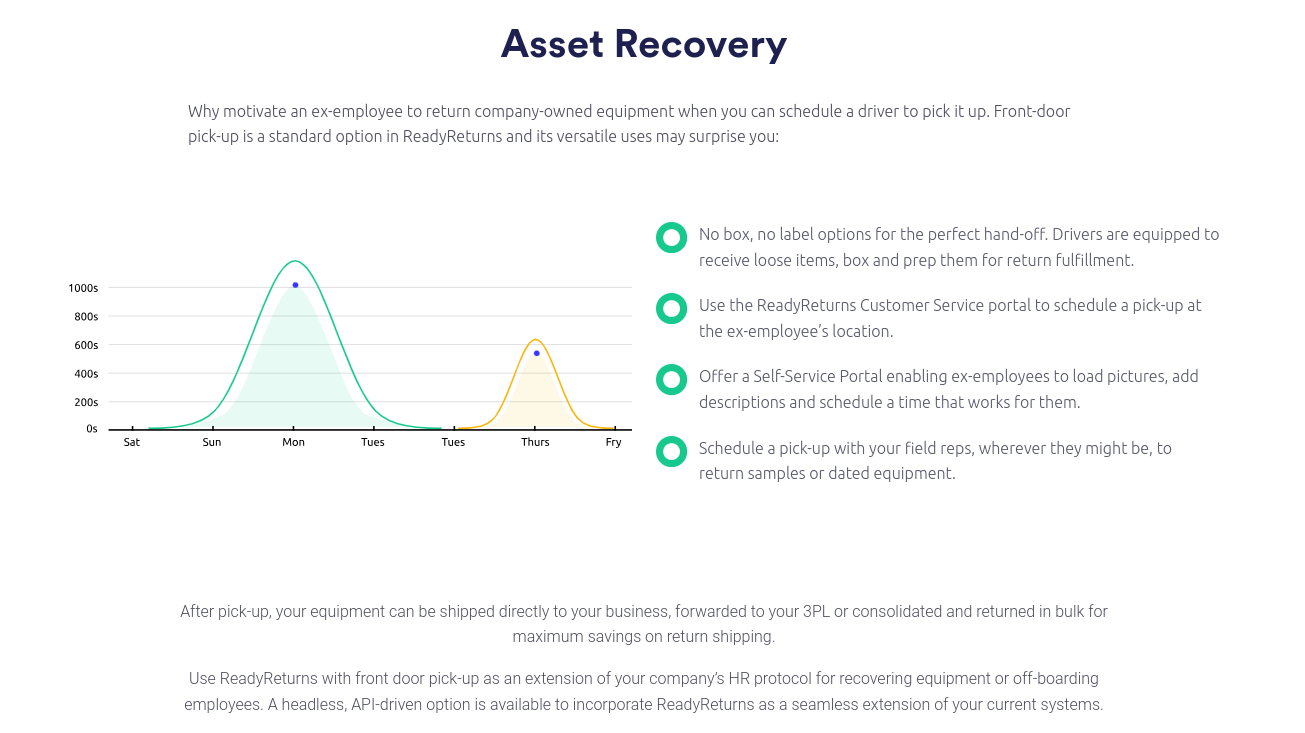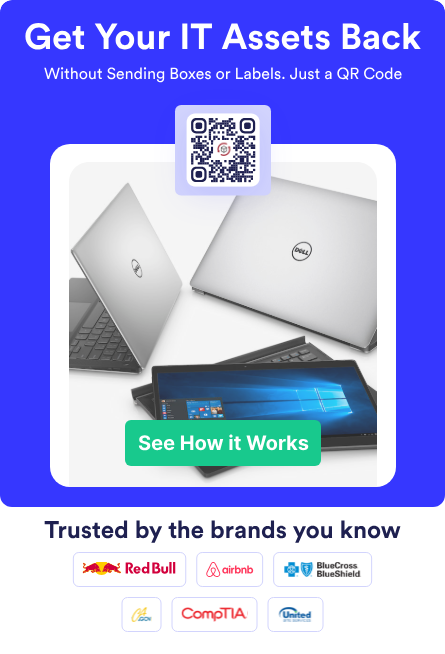Simplifying ServiceNow Hardware Asset Returns and Refresh Processes: A Complete Guide

Effectively handling hardware assets ranks among the toughest hurdles for today’s organizations. The complexities of tracking, returning, and refreshing equipment often lead to logistical nightmares, unnecessary expenses, and compliance issues. Fortunately, ServiceNow provides a powerful suite of tools that can streamline hardware asset return and refresh processes. Even better? With ReadyCloud’s robust ServiceNow integration, everything is streamlined. This detailed guide dives into ways businesses can streamline workflows, cut expenses, and boost overall efficiency.
The Importance of Hardware Asset Management
Before diving into the specifics of ServiceNow’s capabilities, it’s essential to understand why hardware asset management (HAM) is so critical. Whether it’s laptops, mobile devices, servers, or other IT equipment, hardware assets represent a significant investment. Poorly managed hardware lifecycles can result in:
- Lost or misplaced assets: Ineffective tracking can lead to asset losses, increasing replacement costs.
- Non-compliance risks: Failure to properly retire or return equipment can lead to regulatory penalties.
- Reduced employee productivity: Delays in asset refresh or replacement leave employees working with outdated tools.
ServiceNow’s HAM solution is designed to address these pain points by providing visibility, automation, and efficiency in hardware asset workflows.
ServiceNow Hardware Asset Returns: The Building Blocks of Efficiency
Managing hardware asset returns can be complicated. Whether returning leased equipment, collecting devices from departing employees, or handling defective items, organizations need a structured process. ServiceNow simplifies this with its dedicated hardware asset return workflows.
Step 1: Initiating the Return Process The first step in any return process is creating a return request. ServiceNow’s intuitive platform allows users to generate Return Merchandise Authorization (RMA) orders with a few clicks. This ensures every return is documented and traceable, eliminating confusion or delays.
Step 2: Assessing Asset Condition Before an asset is returned, it must be evaluated. With ServiceNow, employees or IT staff can log the condition of the asset directly into the system. This step ensures that damaged or defective items are flagged for repair or disposal while functional items are ready for redeployment.
Step 3: Logistics Management ServiceNow supports seamless logistics coordination. Whether shipping items to vendors, reclaiming assets from employees, or managing in-house collections, ServiceNow tracks every step of the journey. Features like shipment tracking and automated notifications reduce errors and enhance visibility.
Step 4: Updating the Asset’s Status Once the asset is returned, its status is updated within ServiceNow. This could include marking it as “Pending Disposal,” “In Repair,” or “Ready for Deployment.” Keeping asset statuses up to date improves inventory accuracy and prevents over-ordering.
Step 5: Reporting and Compliance ServiceNow’s robust reporting tools allow organizations to monitor hardware asset return trends, identify bottlenecks, and ensure compliance with company policies or lease agreements. Reports can be tailored to showcase essential metrics like return timelines, asset status, and vendor performance.
ServiceNow Hardware Asset Refresh: Keeping Your Workforce Equipped
With technology advancing quickly, employees require up-to-date tools to do their jobs efficiently. ServiceNow simplifies the asset refresh process, ensuring employees receive updated equipment without unnecessary delays or disruptions.
Streamlining the Refresh Workflow
- Identifying Assets for Refresh: ServiceNow’s HAM module includes lifecycle tracking features that help IT teams identify assets eligible for refresh. This might depend on factors like the asset’s age, performance problems, or an expired warranty. Through pinpointing the right time for refresh, businesses can optimize costs while keeping employees productive.
- Requesting a Refresh: ServiceNow’s Service Catalog allows employees to submit refresh requests with ease. IT teams can automate the approval process, ensuring that requests are processed quickly and without manual intervention.
- Procurement and Deployment: Once a refresh request is approved, ServiceNow automates the procurement of new equipment. The system tracks the order, delivery, and setup of the replacement asset, ensuring minimal downtime for employees.
- Retiring Old Equipment: Old equipment must be properly retired or repurposed. With ServiceNow, organizations can mark assets for recycling, donation, or disposal, maintaining compliance with environmental regulations.
- Asset Tracking and Reporting: ServiceNow provides detailed reports on refresh activity, helping organizations understand trends, budget impacts, and the overall effectiveness of their asset refresh strategy.
Overcoming Common Challenges with ServiceNow HAM
While ServiceNow simplifies company equipment return and refresh processes, organizations often face challenges in implementation. Here’s how to address some common hurdles:
Challenge 1: Lack of Asset Visibility
Many organizations struggle with poor asset visibility, making it hard to track hardware during returns or refreshes. ServiceNow resolves this by providing a centralized database of asset information, accessible to IT and operations teams.
Challenge 2: Inefficient Workflows
Manual processes are prone to errors and delays. ServiceNow’s automated workflows eliminate manual tasks, reducing processing times and ensuring accuracy.
Challenge 3: Non-Compliant Returns
Returning leased or company-owned assets requires strict adherence to policies. ServiceNow ensures compliance by tracking every step of the return process, providing detailed logs for audits.
Best Practices for Hardware Asset Management in ServiceNow
To fully leverage ServiceNow’s capabilities, organizations should adopt the following best practices:
- Automate as Much as Possible: From return approvals to refresh requests, automation reduces manual errors and speeds up processes.
- Maintain Accurate Records: Keep asset details in ServiceNow updated regularly to maintain accurate tracking and reporting.
- Train Employees: Ensure employees understand how to use ServiceNow’s Service Catalog to submit returns and refresh requests.
- Integrate with Other Systems: Connect ServiceNow with procurement, logistics, and HR systems to streamline workflows further.
- Conduct Regular Audits: Periodic reviews of asset data help identify discrepancies and opportunities for improvement.
The Role of ReadyCloud in ServiceNow Asset Management
While ServiceNow provides comprehensive HAM solutions, integrating it with ReadyCloud takes efficiency to the next level. ReadyCloud enhances asset reclamation by simplifying equipment returns and improving user experiences.
Benefits of ReadyCloud Integration:
- Improved Employee Experience: Easy-to-use portals ensure employees can return laptops or request assets without confusion.
- Enhanced Tracking: Real-time visibility into returns reduces the risk of lost or delayed assets.
- Security and Compliance: ReadyCloud ensures that all returned assets are processed securely, protecting sensitive data.
Simplify Field Asset Management with ReadyCloud Field File Upload for ServiceNow
Effective hardware asset management isn’t just about returns and refreshes—it also requires real-time visibility and efficient documentation in the field. This is where ReadyCloud Field File Upload for ServiceNow comes into play. Enabling field teams to upload files directly into the ServiceNow platform means that this solution streamlines data collection and enhances asset management workflows.
What Is ReadyCloud Field File Upload for ServiceNow?
ReadyCloud Field File Upload for ServiceNow is a robust integration designed to simplify the process of documenting and managing hardware assets in the field. Whether it’s returning equipment, conducting repairs, or managing asset refresh tasks, field teams can instantly upload critical documentation—such as images, invoices, or condition reports—into ServiceNow from their devices.
Key Features of ReadyCloud Field File Upload
- Seamless Integration with ServiceNow: ReadyCloud’s file upload feature integrates directly into the ServiceNow platform, ensuring a smooth and unified workflow. Field agents can attach files directly to asset records or service requests, making it easier to track changes and updates in real-time.
- Multi-File Support: This feature supports multiple file formats, including images, PDFs, and spreadsheets. Whether it’s uploading an inspection report, capturing an image of damaged hardware, or attaching a compliance certificate, the system handles it all seamlessly.
- Mobile-Optimized Functionality: Field teams often work on the go, so ReadyCloud’s file upload feature is optimized for mobile devices. It’s simple to capture and upload files directly from a smartphone or tablet, saving time and reducing errors.
- Enhanced Data Security: ReadyCloud ensures that all file uploads comply with organizational security standards. With encryption and secure connections, sensitive information is protected during the upload process.
- Real-Time Updates: Files uploaded through ReadyCloud are instantly available in ServiceNow, enabling IT and operations teams to access critical information without delays. This ensures faster decision-making and more effective management of hardware assets.
Benefits of Using ReadyCloud Field File Upload for Asset Management
Adding ReadyCloud Field File Upload to your ServiceNow environment provides significant advantages, particularly for organizations managing extensive field operations. Here’s how it can enhance your hardware asset management strategy:
- Improved Documentation Accuracy: Field teams can upload asset condition images or damage reports directly, reducing errors and ensuring accurate records.
- Faster Processing: Immediate access to uploaded files enables IT teams to process returns or repairs without waiting for paperwork to arrive.
- Increased Efficiency: With mobile-optimized functionality, field agents can complete their tasks quickly, ensuring minimal downtime for hardware assets.
- Enhanced Compliance: Attach compliance documents or certifications directly to asset records to maintain audit-ready documentation.
- Streamlined Collaboration: Real-time file uploads foster better communication between field teams, IT departments, and operations managers.
Use Cases for ReadyCloud Field File Upload in ServiceNow
- Hardware Returns from Field Locations: Field teams collecting hardware from remote locations can instantly document asset conditions and attach images or reports to the ServiceNow record.
- Asset Repairs and Maintenance: During maintenance visits, technicians can upload repair logs, before-and-after photos, or part replacement invoices directly into ServiceNow.
- Compliance Audits: Field teams conducting audits can upload compliance reports or certifications, ensuring that all required documentation is stored alongside the relevant asset record.
- Asset Refresh Deployments: During refresh activities, field agents can upload delivery confirmations, new asset photos, or installation reports to the respective ServiceNow task.
How to Get Started with ReadyCloud Field File Upload for ServiceNow
Getting started with this company equipment returns integration is straightforward. Organizations can enable ReadyCloud Field File Upload as part of their existing ServiceNow implementation. The user-friendly interface ensures that field teams can quickly adapt to the new functionality, and the secure file upload process aligns with IT governance policies.
Transform Field Operations with ReadyCloud
Through integrating ReadyCloud Field File Upload with ServiceNow, organizations can empower their field teams, enhance documentation accuracy, and improve overall hardware asset management workflows. This innovative solution bridges the gap between field operations and centralized IT systems, ensuring seamless collaboration and real-time visibility.
Take Control of Your Field Asset Management Today
Learn more about ReadyCloud Field File Upload for ServiceNow and how it can elevate your hardware asset workflows. Visit ReadyCloud Field File Upload for ServiceNow and start simplifying your field operations today!
Elevate Your Asset Management with ServiceNow
ServiceNow is a powerful tool for managing hardware asset returns and refreshes, offering visibility, automation, and compliance features that save time and money. Integrating solutions like ReadyCloud means that organizations can further streamline these processes and improve user experiences.
Ready to Transform Your Hardware Asset Workflows?
Explore how ServiceNow and ReadyCloud can optimize your hardware asset returns and refresh strategies. Visit ReadyCloud ServiceNow Integration and take the first step toward better hardware lifecycle management today!
What You Should Do Now
Offboarding remote employees? Need your company devices back? Here are three ways we can help you retrieve devices from remote employees:
Schedule a Demo – If you want to recover remote employee devices without sending a box or label, just a QR code, schedule a demo of ReadyCloud IT Asset Retrieval. We’ll tailor the session to your company’s needs and address any questions.
Integrate with Your Current Tools – Install the ReadyCloud IT Asset Retrieval app directly in your ServiceNow, Jira, or Freshservice instance to issue QR codes from your existing workflows. Have a custom system? Contact us for our headless API.
Get the Free Guide – Unveil the 7 critical pitfalls companies encounter when recovering remote employee IT assets, and prevent costly mistakes, low recovery rates, and wasted resources.
Share On:






